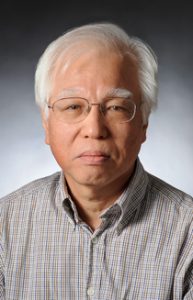
Norio Nakagawa is scientist II for the Center for Nondestructive Evaluation and an adjunct professor of aerospace engineering at Iowa State University. In this post, he talks about the global effort involved in the recent discovery of gravitational waves and shares his experience with a related project.
Disclaimer to start with: This ISU researcher did not discover gravitational waves. Accolades for the recent discovery, possibly one of the greatest in physics, should go to the LIGO group (www.ligo.org), consisting of the core MIT-Caltech collaboration and many other contributors. This US-led scientific effort is hardly isolated, as there are on-going efforts in other parts of the world, notably by Europeans (GEO600 www.geo600.org, EGO/VIRGO www.ego-gw.it) and by Japanese (KAGRA, gwcenter.icrr.u-tokyo.ac.jp).
If you want to “see” the LIGO site, check the location on a digital map at the coordinate (30.541908, -90.783363), just north of Livingston, Louisiana. You may see the odd-looking strips of a rotated “L” shape. That is the trace of the LIGO detector, each arm being 4 km long. Actually, this is one of the twin pair, and the counterpart is built in Hanford, Washington. Can you spot that one on the map?
Why the L-shape? The answer has to do with the nature of the gravitational wave, where its fundamental mode shape is the quadripole (i.e. 4-pronged up-down-up-down), unlike the dipole of the electromagnetic wave. A single line antenna will do to catch radio waves, while cross-shaped antennas are required to detect gravitational waves.
Along the L-shaped path runs a laser beam, passing through vacuum pipes, reflected back and forth by mirrors suspended at end locations. A mirror may be a chunk of low-loss material, such as fused silica, of nominally 1 m in size. The optical path forms a Fabry-Perot interferometer. By this optical system, the mirror-to-mirror distances can be monitored constantly, as their variations are the signal to look for. And the mirror surfaces must be kept VERY, VERY still, to meet the required accuracy. The seismic isolation is a key requirement, and the problem was addressed by the suspension mechanism of the mirrors. Yet, the mirror body undergoes thermally induced elastic vibration. One needed to understand and mitigate this volumetric thermal noise source.
I had an opportunity to work with a Stanford group who was charged to provide LIGO with the core optics. The ISU project was funded by NSF for the period of 1997 through 2000, and aimed to calculate the amount of the thermally induced surface fluctuation when given the shape and loss parameter of a mirror. How is the loss parameter related to the vibration? The answer is the cerebrated fluctuation-dissipation relation, which allowed us to formulate the method of computing what was asked for. Now, an interesting question: Who instigated the subject of the F-D relation? In the physics world, the credit often goes to, who else, Albert Einstein.
In 1905, Einstein wrote four papers, two of which are the most famous, i.e. on the special relativity. The least well-known, but still important, is the paper on the Brownian motion, where he actually derived the relation between the random-walk distance (fluctuation) and the viscosity of the fluid (dissipation), based on the fact that the two phenomena are driven by a common underlying dynamics, i.e. collisions with atoms. Of course, he was proven right. Incidentally, the fourth paper was on the photoelectric effect.
It was interesting and curious to see his 1905 and 1915 contributions intermingled in the project. Perhaps, this was a reflection of his vast ingenuity. Or, perhaps, this was an indication of how large LIGO Project had to be, where every piece of knowledge and expertise was exploited to achieve the recent success. It was a joy to take a small part in it.